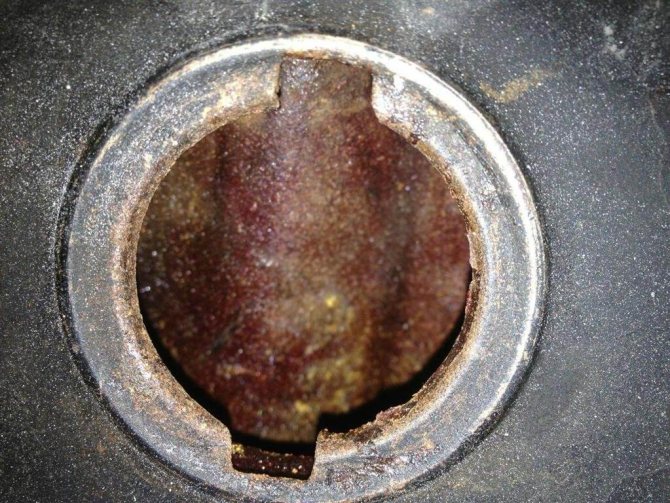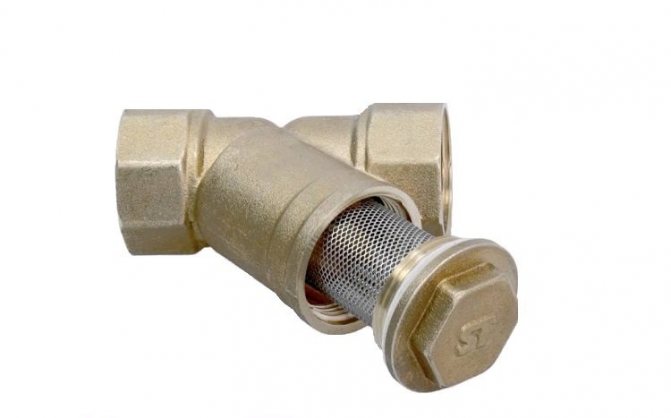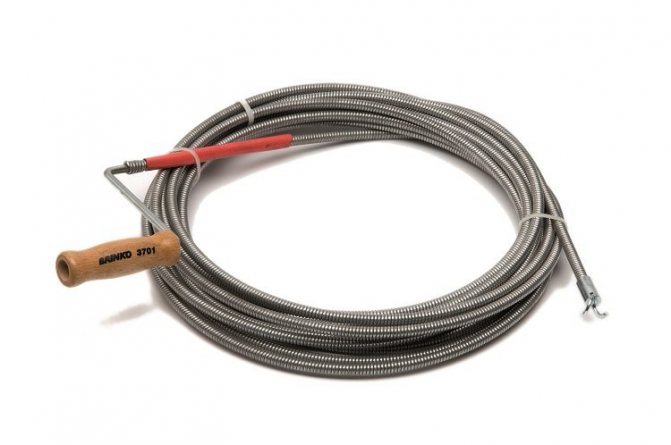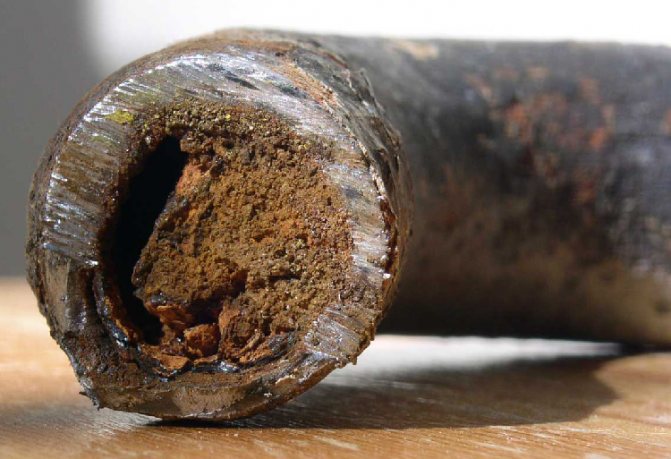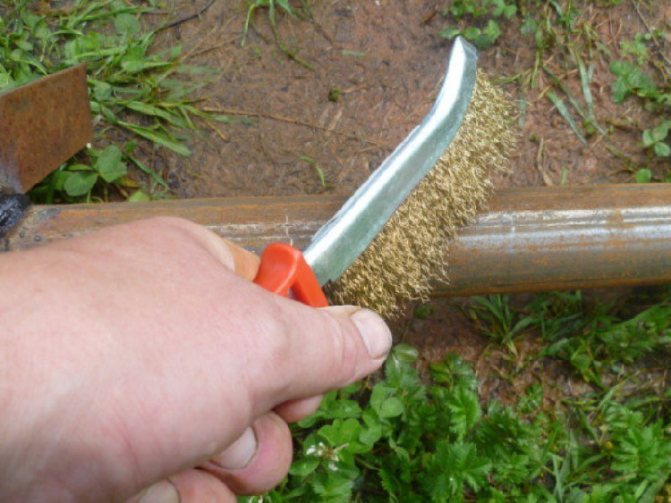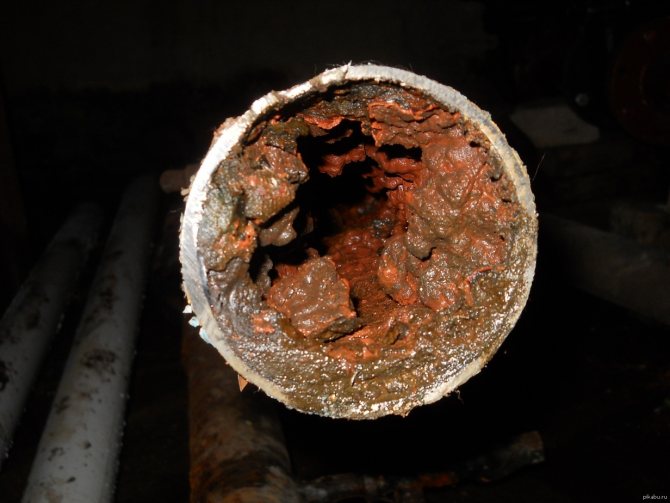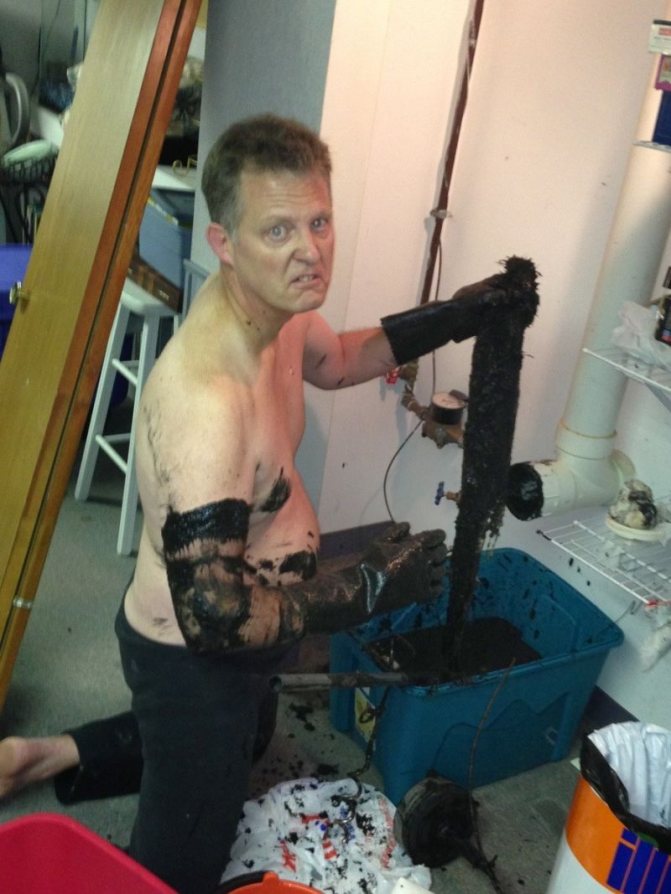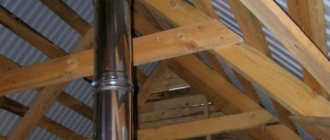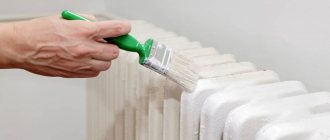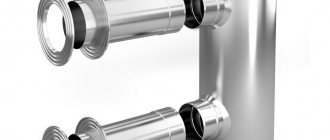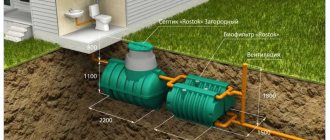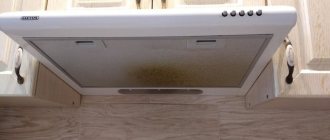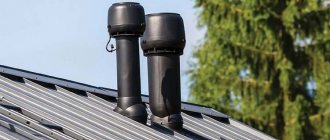How does corrosion in pipes appear and what does it lead to?
As the water temperature rises for every 10 ° C, its ability to cause corrosion doubles and the ability to dissolve CaCO3 and CaSO4 salts decreases, which leads to accelerated scale formation.
However, it is not only reactions between different chemical elements that harm heating systems. Substances that are dissolved in any water have the ability to settle and attach to the walls of streams.
These chemical processes contribute to the formation of rust and scale in the heating system, which reduces pipe clearance and heat transfer.
A corrosion inhibitor is used to prevent or slow down corrosion processes in heating systems. Various additives and reagents are used to reduce the formation of scale.
Sodium hydroxide
Lye is one of the most effective anti-rust products. Alkaline products can be used to remove rust stains from plumbing fixtures. They are applied directly to the stains and left to work for about 20 to 25 minutes. If the size of the smudges is too large and ordinary household chemicals cannot cope, it is recommended to use an active alkali - caustic soda. In a saucepan with boiling water (2 liters), dissolve 50 grams of caustic soda. The resulting solution is poured onto the rust stain and left for 10 minutes. Such agents remove rust without mechanical impact and are unable to damage surfaces.

Consequences of clogging
Regardless of what the source of clogging of the heating pipe is, the outcome is almost always the same:
- after a certain moment, the pipes are clogged;
- the movement of water in the pipes is reduced and later even the water pump will not be able to pump water through this system.
Things are much worse with thermosyphon heating, where there is no such pump. As a rule, after clogging, heat is not allowed through and the pipes remain cold. And this is only part of the trouble. In addition, the boiler itself begins to heat up strongly, which can lead to its breakdown.
Some owners carry out an annual cleanup of the blockages of such a system by changing the water. In other words, the old unclean, rusty water is drained and filled with new. And this is reasonable, because when the old water is drained, a small amount of chips and rust leaves it. But there is also an opposite side. Iron and oxygen are needed for rust to appear. If the pipe is metal, then iron is always present in it, but oxygen is contained in the water. As a rule, when you do not change the liquid in the heating system for a long time, the oxygen content in it decreases significantly, which means that the rusting process stops. With a constant change of water, on the contrary, its activation occurs. Summing up a small summary, we can say one thing - this method helps to get rid of a small amount of rust, but, on the other hand, we only speed up the new process of its formation.
How can you perform internal pipe cleaning?
To remove various deposits in the plumbing or heating systems, an internal pipe cleaning is performed. Many experts recommend to carry out preventive cleaning and flushing of pipes from scale and rust at regular intervals.
Currently, there are several methods aimed at increasing the throughput of pipes, with the help of which it will be possible to carry out preventive and cleaning measures:
- hydraulic shock;
- using special chemicals;
- using sandblasting;
- using abrasives.
Water hammer cleaning of pipes
Using this technique, high-quality cleaning of water and heating pipes from rust and scale is carried out. Only specialists should perform such work. They also use the appropriate equipment, through which rust is removed from the internal surfaces. It is connected to the system, after which compressed air is released into the pipes.
Under high pressure, the air flow cleans any contaminants as efficiently as possible. Thanks to the hydraulic shock, there is no need to dismantle the entire communication, therefore, cleaning activities can be carried out in all weather conditions and temperature conditions.
When carrying out these activities, you should follow the safety rules, which are regulated by the relevant regulations, therefore it is better to entrust the implementation of such work to professionals.
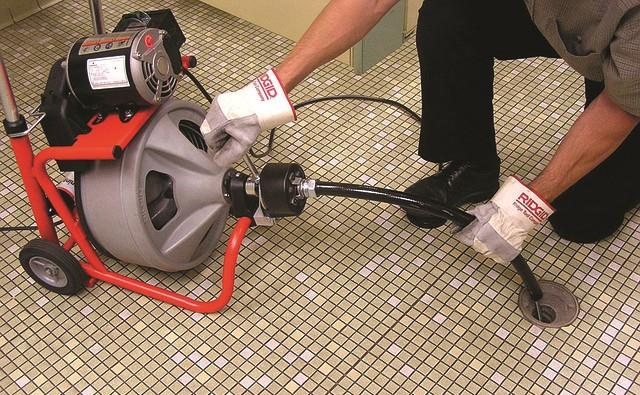

With the help of this device, a water hammer is applied
Internal pipe cleaning with special products
Since in the process of active operation of pipes, rust and scale accumulate on their internal surfaces, which significantly reduces their throughput, and also has a negative effect on water quality, some specialists clean the communications using special means (citric acid, chemistry). With their help, pipes are cleaned from scale in communications of any length.


Cleaning pipes with chemicals
Chemical elements can, if used incorrectly, compromise the integrity of the pipes, so they must be used in full accordance with the instructions.
Cleaning the inner surfaces of pipes using sandblasting technique
Cleaning the inner surface of pipes from scale and rust and other contaminants can be carried out by means of sandblasting. This procedure is carried out under controlled pressure using a continuous flow of air mixed with abrasive. To apply this cleaning method, it is necessary to dismantle the heating or water supply lines, which is very problematic when they are located in hard-to-reach places.
However, for small layers, there are handguns commercially available equipped with a sand container. It is worth noting that they will not be able to cope with serious deposits.
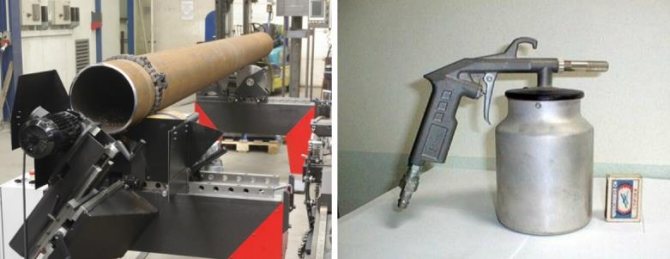

Sandblasting machines for pipes - professional and manual
Cleaning the inner surfaces of pipes with abrasives
This method provides for the addition of special abrasives to the water flows passing through the pipes, which remove rust and other deposits from the inner surfaces, and in fact is an analogue of sandblasting.
It has its advantages and disadvantages:
- high consumption of abrasive;
- it takes a lot of time to complete the work;
- as an abrasive, it is necessary to use special materials with certain parameters.
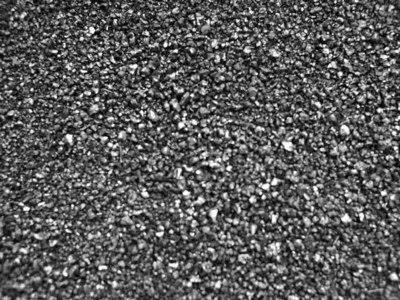

Special powder for abrasive pipe cleaning
Before you clean the pipes from rust, you should decide on the method according to which these activities will be carried out. Some specialists also use for these purposes such devices as cables, the diameter of which is an order of magnitude smaller than the pipes. The movement of the cable along the communication is carried out using an electric or pneumatic drill.
How to remove condensate and rust from pipes with your own hands
It is difficult to find an apartment in which condensation does not form on the pipes with cold water. The reason for this is either the high vapor content in the air, or temperature differences. Why is condensation on pipes harmful?
If you do not fight this "little thing", you will have to fight with mold, and it is known to be almost invincible because of its ability to adapt to any environment. In addition, Japanese scientists have long proved that the main mystery of our planet, as the mold is called, is similar to both animals and plants, possessing the rudiments of intelligence! So is it really worth letting this enemy, who is not afraid of radiation, into the house?
How to find the cause of mold? Open the bathroom doors at night and check if the pipes are dry before the morning. If you do not find moisture, then the problem lies in poor ventilation of the room. Clear the blockages and the issue will resolve itself.
Another common reason is a leak from a faulty tank. Water that does not have time to warm up in the pipe is replaced by cold water. Cooling down even more, the pipes become covered with condensation. Craftsmen should check and repair the taps and the inlet valve.
However, the riser pipe is also capable of "sweating", but it means that the problem is not with you, but with the neighbors: the pipes are leaking from them.
How to remove condensation from bathroom pipes?
Many craftsmen advise winding a bandage around the pipe, lowering its end into any container to pour out the water, but this method is temporary and ineffective. It is better to buy thermal insulation and wrap pipes with it (ask the seller for a soft insulation). Even a woman or a teenager can cope with this work, so the owner will be ashamed who does not put the pipes in the bathroom in order. Remember that the sponge is only installed on dried pipes.
Another easy way is to walk to the nearest hardware store, where they will tell you which pipe cleaner is better to buy. Usually, their principle of action is the same: a powder or binder forms a film on cast iron or plastic pipes that does not allow moisture to pass through.
If you decide to get rid of the condensate forever, then do all these simple steps together to insure yourself, because gifts from the chemical industry are also short-lived, and therefore the pipes will "get sick" again.
How to remove rust from pipes?
The most common method is to remove rust from heating pipes using brushes with a metal mane. The same method is well known to those who have cleaned the pipes before painting. However, no matter how hard and for a long time you rub with the brush, it will not work to completely tidy the pipes, which means that you cannot take up the paint.
Try this. Mix equal proportions of vinegar and lemon juice, apply to the pipes and leave them there for 2-3 hours. Rinse off any remaining rust using a bucket of water and a rag.
Another option is to prepare a soda solution. After mixing two tablespoons of baking soda and 1/3 cup of water, apply this thick mixture to the area of the pipe that you want to remove rust from. After waiting 20-25 minutes, remove the rusty deposits with a metal washcloth. If the pipes are not prettier the first time, then repeat this procedure. The only condition is not to overexpose the mixture on the metal, otherwise you will damage the pipes. Better to detect 15-20 minutes and check the result than to overexpose.
The next very simple way is to go to the nearest auto shop or car market to buy a special paste for removing rust from metal. After cleaning the pipes, apply a thin layer of the paste to the metal, and then wipe off the rust with a cloth dampened in water. Repeat the procedure if the paste did not remove the orange-brown plaque the first time, although this is rare.
How to protect pipes from rust?
It is not worth hoping that everything was decided so quickly forever, so hurry up to purchase an anti-corrosion coating, prime the “weak points” of the pipe and apply the mixture.
Choosing a quality cleaning agent for the heating system
Today, many special products for flushing heating systems are presented on the domestic market, however, not all of them are of high quality.
Choosing a low-quality reagent, you risk not only not getting the desired result, but even harm your pipes, since some components can cause significant damage to their surface.
When buying a composition, you need to make sure of the good reputation of the manufacturer and be sure to check all the necessary quality certificates. If they are available, you can be sure that the cleaner will certainly show good efficiency and will get rid of rust and sludge in one treatment.
The composition of such agents, as a rule, includes acid and special inhibitors, which prevent the etching of the metal and, as a result, the formation of corrosion on it. They not only wash the pipes, but also reliably protect them from rust for a long time.
Recommended
DOCKER THERMO is an effective cleaning agent for heating systems. Recommended for the treatment of boilers, high and low pressure boilers, condensers, heat exchangers, pipelines, for washing household water heaters. The selectively active composition of the substance allows you to flush systems with not only metal, but also plastic or rubber tubes. Concentrate.
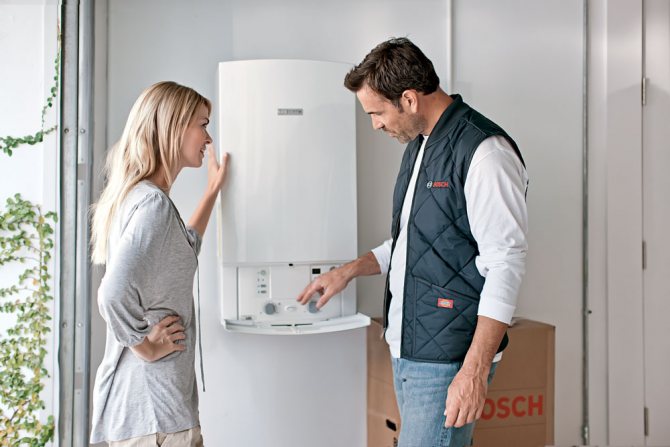

Photo: Bosch. To ensure the long-term operation of the heating system, regular maintenance is required. In addition to checking the pressure, you should also monitor and, if necessary, adjust the pH value of the water in the heating system.
Among all the dangerous phenomena, the most "popular", perhaps, is the precipitation of scale - this is the name of the solid insoluble sediment of calcium, magnesium and some other metals. It is formed as a result of heating tap water to 60–65 ° C, in which these salts are contained in the form of ions. All parts of heating and hot water supply systems that come into contact with water can suffer from scale, but sediment is most intensely formed on heating elements of electric storage-type water heaters. They also need additional protection. Most storage devices are equipped with a magnesium anode, which, gradually collapsing during the oxidative reaction, protects the heating element from scale formation, and the tank walls from corrosion.
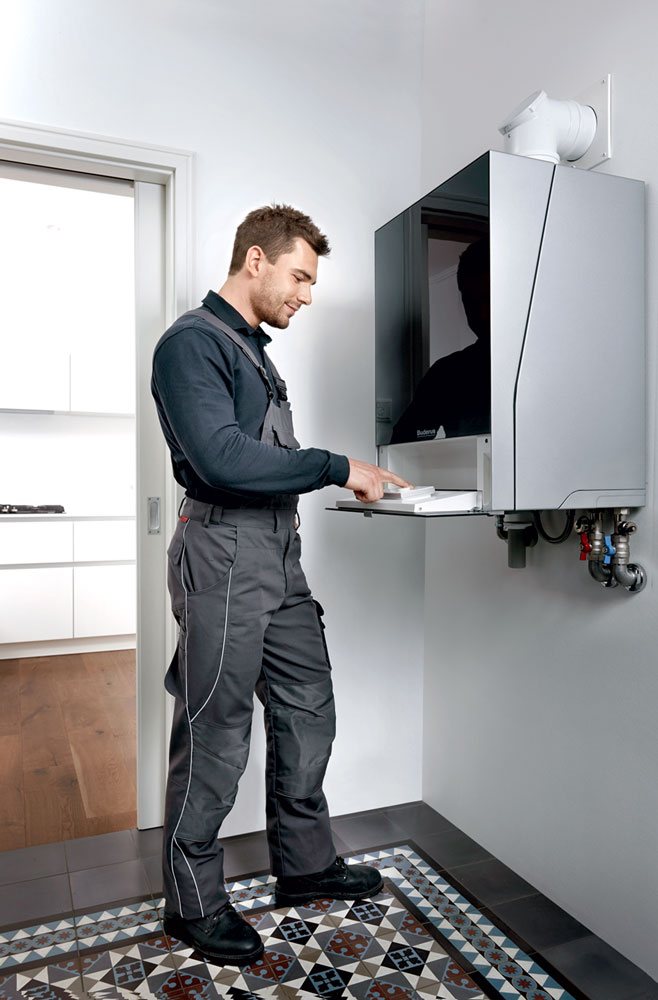

Photo: Buderus. To prevent corrosion of the boiler, the combustion air must not contain aggressive substances. Corrosion-promoting halogenated hydrocarbons, chlorine and fluorine compounds
The magnesium anode must be replaced if it is severely worn. The condition of the rod is assessed visually during the annual service inspection. Usually, the anode is supposed to be changed every 1-2 years, so when buying it is worth clarifying where the part can be purchased and how exactly it needs to be replaced. However, at the present time, models of water heaters with a titanium anode connected to a protective current source ("superimposed current") have become widespread and do not require replacement.
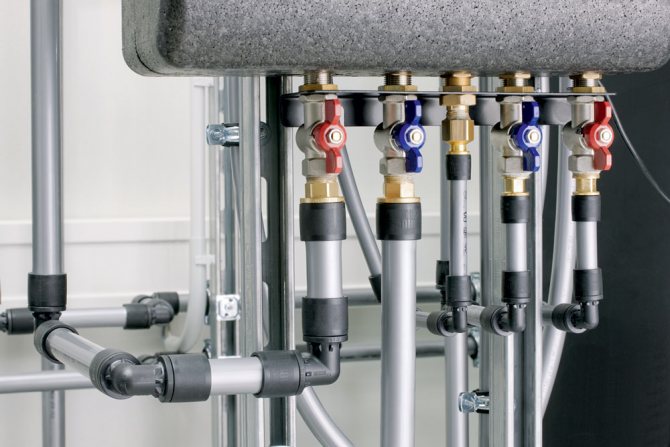

As for the heating systems of country houses, in well-equipped closed circuits in small volumes of circulating coolant (several tens of liters), the risk of scale formation is small. And in order to avoid it, it is enough, as water enters the house, to carry out its general preparation aimed at reducing the hardness, reducing the content of calcium and magnesium ions (we talked about this in detail in the article "Water - and nothing superfluous", No. 1/2015. ). Another thing is communal boiler houses, where there are significantly larger volumes and constant leaks that have to be compensated. In such cases, both additional softening filters in the water make-up system and magnetic water activators, which are popular today, can be used.
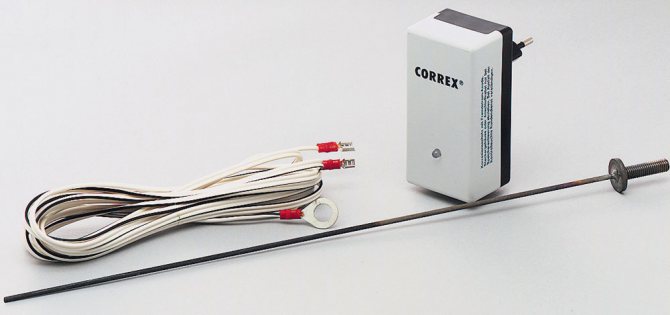

Photo: De Dietrich.Titan Activ System Kit (De Dietrich) made of superimposed titanium anode and power supply. Its advantage is that the anode is not consumed during operation.
A much greater danger for domestic heating systems is the corrosion of the metal of the heating installation. It can occur due to the ingress of oxygen from the air into the heating system. Possible oxygen penetration routes are leaks in the heating system, vacuum zones, an undersized expansion tank or plastic pipes without a protective layer. It is difficult to fight corrosion, it is much easier to ensure the tightness of the system in advance by correctly designing the circuit and using pipes with a protective layer.
Corrosion damage usually occurs when oxygen continuously enters the heating water. To avoid this, the heating system must always be closed. In cases where it is impossible to create a closed system, it is necessary to provide special measures to protect against corrosion when treating the water used for heating. In addition to filling the heating system with demineralized water, special chemicals can also be added. They bind free oxygen or form a film on the surface of materials that protects against corrosion. In addition to checking the pressure, the pH value of the water in the heating system should also be monitored and, if necessary, adjusted. It should be between 8.2 and 9.5.
Sales Support Engineer, Bosch Thermotekhnika
Cleaning profile pipes from rust in different ways
If the pipe is damaged only from the outside, it is still quite possible to correct the situation. How to clean the water pipe from rust in this case?
For this, there are the following methods for eliminating corrosion:
- Mechanical. To do this, you need an emery cloth, a spatula, and an ordinary abrasive (for example, a metal kitchen sponge). Cleaning is carried out by simply wiping the pipe: if we are talking about a thin layer of corrosion, then it is removed quite simply. Then the surface cleaned is washed with soapy water. As for the method of painting a pipe for rust, practiced by some, this will only cover up from visual viewing the process of pipe decay, which will continue in the future.
- Acid. Vinegar or citric acid can be found in every home. To prepare the solution, you will need equal proportions of these substances. A brush or sponge is used to apply the mixture to rusty pipe sections. After waiting for about three hours, the smeared areas should be washed off with warm soapy water. If, after this procedure, complete removal of corrosion has not occurred, the following method will come to the rescue.
- Alkali. There is also no need to run to the store, since all the necessary ingredients are available in any household. Take two tablespoons of baking soda, and dilute in 1/3 cup of warm water. After the soda is well dissolved, the finished paste is applied to the rusty places of the pipe. Before that, it is advisable to already clean the pipe mechanically. To wash off the soda, a few drops of vinegar are added to warm water, which makes it possible to completely remove the soda bloom. The holding time after applying the alkaline paste is no more than 20 minutes, in order to avoid damage to the pipeline surface with a caustic substance.
- By special means. On the shelves of hardware stores, there are a lot of rust remedies, both preventive and cleaning type of action. In the process of application, you should strictly adhere to the attached instructions. No experiments with such substances should be carried out, since the alkali contained in their composition can seriously damage the metal.
We suggest that you familiarize yourself with How to remove sunscreen film from a window
To choose the best option, you need to carefully study each method of cleaning pipes from rust.They start with a simple mechanical action on the outer surface of the pipes. For delicate tapping, a wooden mallet is used, or the force is precisely measured when working with a metal hammer. Decorative and protective coatings can be protected at the impact site with a damping pad. The detached impurities are washed out with a stream of water into the drainage.
This machine is only suitable for open sections of the track. It takes some skill to break up blockages and keep the paint coat intact. Too strong blows can damage the welded seam, break the tightness of the seals. Such influences can damage the connected pressure gauge, other control devices, solenoid valves. Disconnect the associated products prior to performing this procedure.
Another mechanical method of cleaning profile pipes from rust is distinguished by a directional effect. To reproduce it, you will need a specialized plumbing cable in a corrugated sheath. This anti-rust filter is capable of navigating curved tracks without compromising functionality. A rigid metal wire brush is attached to the output node. For rotation, use a manual or faster electric drive.
Disadvantages of the method:
- a special cleaning machine is required;
- working length and permissible bending radius are limited;
- tees, bends and other complex components of the system will have to be disassembled;
- scratches form on the inner surface, which contribute to the subsequent fixation of new dirt.
Mechanical surface treatment on the outside can be organized using a sandblasting machine. Equipment in this category delivers abrasive particles at high pressure. Instead of sand, sometimes specialized granular materials are used. It is better to entrust the execution of such work to professionals, since it is impractical to purchase an expensive kit for a one-time procedure.
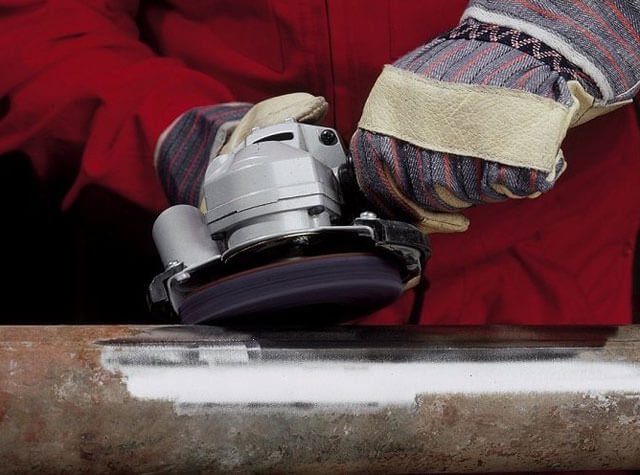

A similar conclusion should be made after studying the technology of hydraulic shock effects. This option also requires specialized hardware. Without sufficient qualifications, pipes can be deformed too much. The algorithm is carried out in strict accordance with the instructions that ensure safety for the performers.
Sandblasting the profile pipe from rust is most effective in straight sections. The hydraulic action is also suitable for bends, so fewer dismantling operations are required. In either case, you will have to pay for the services of specialists.
In the retail network, you can find reagents created to clean pipes from rust, calcium and other contaminants. Below is a typical manufacturer's instruction:
- the liquid is drained from the system, filled with fresh water;
- open locking devices to ensure unhindered circulation in a closed loop;
- create a working composition from a concentrate diluted with water in the recommended proportion;
- pour it into a special tank;
- connect equipment that ensures the movement of the train along the contour at a given speed for 12-24 hours;
- remove the solution with impurities;
- flush the system, neutralize acid residues with an alkaline solution.
Personal protective equipment is used to safely clean the profile pipe from rust from the inside with potent reagents. They use rubber gloves, long-sleeved clothing, and glasses. If chemical compounds get on the skin, they are immediately removed with soap and water.
Dedicated reagent wash equipment is not very expensive. It can be rented in some cities. Well-equipped standard kit:
- overload protected pump;
- devices and valves for control and regulation of pressure;
- working solution tank;
- a heater that accelerates chemical reactions;
- connecting tubes, power frame with wheels.
We invite you to read How to remove blood from carpet - Mactailor
All components in contact with reagents are made of chemically neutral resistant materials. To check the state of contamination, flushing pumps are used, specialized liquid "probes" that change color depending on the composition of impurities.
It is easier to work with an open surface. At a minimum, it makes it easier to visually check from within the effectiveness of different means. Careful control will prevent damage to profile pipes and other products.
Together with rust, paint and other surface layers are removed. A machine tool, metal spatulas, sandpaper are used. To speed up the procedure, use an electric drill or other instrument with a suitable nozzle. The mode and efforts are selected that do not form large defects on the surface. It should be remembered that the wall thickness of standard water pipes is 2.25-4 mm with a diameter of ¼-3 inches, respectively.
For removing rust residues from the outside after mechanical processing, products created from improvised ingredients are suitable. In proportions one to one mix food 9% vinegar and crystalline citric acid diluted with water. The mixture is left for 2-4 hours! Dissolved contaminants are washed off with a heated soapy solution.
A similar procedure is performed using a machine for cleaning pipes from rust, or using soda (4-5 tablespoons per 150-200 ml of water). Dosing the amount of liquid, create a mixture of thick sour cream consistency. It is applied to contaminated surfaces. Duration - no more than 30 minutes! A thick layer of rust from the inside is dissolved in a few hours by wrapping the working area with plastic wrap. At the final stage, washing with a neutralizing preparation based on vinegar essence is used.
Professionals use the following machine to clean pipes from rust from the outside:
- a solution of water / chromic anhydride / sulfuric acid in the proportions of 80-90% / 20-10% / 0.2-0.5%, heated to 70 ° C;
- a mixture of paraffin and kerosene;
- etching in sulfuric, phosphoric, hydrochloric acid with the simultaneous creation of an electric potential;
- a coating created from slaked lime.
At the final stage, in addition to flushing, specialized machines or preparations (inhibitors) are used to prevent corrosion. Degreased surfaces are coated with a primer. After the layer has solidified, paint is applied.
Cleaning pipes from rust from the inside is limited or completely impossible for operational control in all methods. Acid-damaged areas oxidize faster than contaminated areas. In the worst situations, through damage to the system is formed with leaks inside the building structures. Such accidents are eliminated with a great investment of time and money.
With active corrosion, the routine procedure must be performed every few months. Considering disassembly and other costs, it is not difficult to conclude on the need to purchase rust removers and preventive measures. Negative processes are slowed down by reducing the amount of oxygen in the supplied liquid. In industrial plants, acidity is reduced with chemical reagents.
Rust is often formed from ferrous iron. These impurities are converted to an insoluble trivalent form by natural and forced aeration. In domestic conditions, special fillings with magnesium and other activating fillers are used.
As a rule, together with deferrization, the level of hardness is reduced. At several stages of processing, mechanical impurities are retained. Comprehensive protection extends the life of the transport system and connected equipment. This approach is more cost effective compared to regularly cleaning the pipes from the inside of the rust using filters.
Features of the use of inhibitors
Specially developed reagents for heating systems have the following features:
- Protects all types of metals from corrosion;
- Reduce the adhesion of water-soluble components;
- Prevent the formation of precipitation of insoluble substances in the heating system;
- Designed for use at temperatures above 100 ° C;
- Effective protection period - 5 years;
- The regent should occupy 2 - 2.5% of the total volume of the coolant in the heating system. This significantly reduces the cost of protecting heating systems;
- The additives contain volatile substances that, when evaporated from water, create a protective layer on surfaces that does not come into direct contact with the coolant;
- The additives do not contain harmful substances;
- Slows down the development of bacteria and algae.
Rebuilding rusty water towers
But it must be remembered that if the rusting process has already begun, then before the repair it is necessary either to completely remove rust from the water towers to shine (more often sandblasting is used for this), or to use special soil-compositions that convert rust.
Painting should be done in two layers. With a recommended break of a day between layers. This coating protects the metal from oxygen and precipitation. Remember that precipitation in our time contains not only water, but also acids and salts. Which is an even more aggressive environment for metal.
Rust control
In order for rust not to spoil the heating, you need to prepare the system for start-up in advance. To this end, you need not just pour water into the pipe, but add a special antifreeze to it. Its action is the same as in the engine fluid, that is, it guarantees good heat transfer through the pipes, and also forms the protection of metal surfaces from oxidative processes and prevents the origin of lime deposits and other deposits. This alternative is quite expensive, but makes it possible to forget about constant cleaning.
The entire cleaning stage is relatively simple and does not require complex techniques. The process will proceed as follows:
- pipe cleaning;
- cleaning the heating boiler itself.
Pipe cleaning
The easiest way to clean the heating system is to use chemicals. All we need is to buy a product that can dissolve rust and other types of deposits.
Ordinary citric acid, which every housewife has, can act as such a remedy. It must be dissolved in water, it is advisable to use a three-liter jar, since a large amount gives a greater effect. All this solution must be poured into the heating system. Subsequently, it is immediately necessary to light the boiler, set the temperature to a high mark, and it remains to wait twenty-four hours. Later we drain this water. We wash the pipes by filling and re-draining clean water.
Another similar technique is the use of food vinegar. To achieve the best effect, you need a lot of it. But there is also a safer option - this is the use of hydrochloric acid, mainly 10 or 20%. This chemical is excellent at cleaning pipes. But you need to be careful with this substance, since too high a concentration can significantly damage the heating system.
This operation is suitable only for small blockages. If the pipes are clogged thoroughly, then the compressor will help out. Most often, this method is called hydropneumatic cleaning.
The process will proceed as follows:
- we connect the compressor to the heating system;
- we connect the compressor to the pipe and start;
- flushing begins with a simultaneous combination with pneumatic blows;
- disconnect the pipe going to the boiler (bottom);
- we put some container next to it so that dirty water flows there;
- clean water must constantly flow into the riser (during the discharge of unclean water).
The compressor is expensive and if you don't want to spend money, then you can dismantle the radiators (each separately). That is, they are flushed under tremendous water pressure.
Boiler cleaning
There may be deposits in the boiler itself. In addition, there are more of them here than in pipes. The fact is that it heats up very much, due to which the process is accelerated.
Chemicals are used here. The whole work is quite simple: you need to disconnect the heating pipes, take a pump that is combined with a boiler and water is admitted through it, with chemistry added in advance. We drain all the dirty water and then rinse it with clean water.
Having mastered all the considered tips, you will be able to flush the heating system with full confidence on your own.
Due to the peculiarities of operation, heating pipes and radiators constantly have to come into contact with water. And, as you know, metal, when interacting with a liquid, is prone to oxidation and, as a result, the formation of rust.
Corroded areas can gradually cause leaks. But first of all, this phenomenon is fraught with a decrease in the heat transfer of the entire heating system as a whole.
In combination with lime deposits, rust clogs the passage of pipes and creates a deposit on their inner surface, which prevents the normal heating of the room. In this case, fuel consumption does not decrease, but on the contrary only increases. That is, you spend more money on heating and at the same time you do not get the desired result.
Based on the foregoing, it follows that it is imperative to take timely care of how to flush the heating system from rust.
Clogging reasons
Most often, a decrease in pressure is caused by deposits on the walls of the pipeline. Moreover, even if it is made of plastic components, they are connected to the metal pipes of the risers. It is in this place that you should look for the cause of the blockage.
A large amount of rust, in the form of layers, flakes off from old pipes, and the stream of water carries it evenly along the entire length of the water supply system.
Useful advice! Although removing deposits and rust from the walls of water pipes is a very tedious procedure, do not postpone it if you have the slightest suspicion. So you will not only ensure comfortable use of the water supply system, but also forget about the problem of low pressure for the next 10-15 years.
Pipes can also become clogged with sand or other impurities. The reason for this lies in the fact that over time, their surface becomes rough.
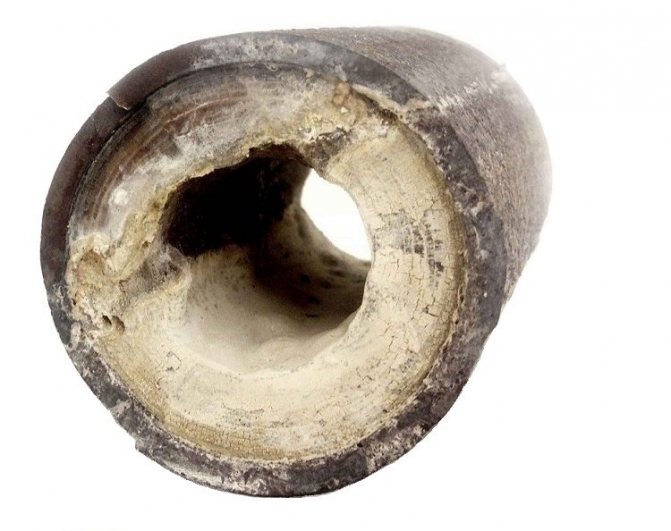

Rust and other deposits accumulate even in plastic pipes
When pipe cleaning is performed
Corrosion changes can also form in heating systems. When they appear, the efficiency of heating the premises will significantly decrease, and the operating costs will greatly increase. The expediency of cleaning depends on the degree of damage:
- Cleaning the pipes in areas that are heavily corroded is not advisable, since during this procedure, the pipe can be damaged. The best solution would be to completely or partially replace the pipes in the system so that it can be operated with maximum efficiency in the future.
- In the event that insignificant accumulations of rust and scale are found, a number of cleaning measures can be carried out and the pipes can be returned to their previous operational characteristics.
Rust on water towers and pipes
Of course, any ferrous metal rusts, but in the case of aquifers, this issue is especially relevant. In places of rusting, the metal becomes thinner, water pushes through the wall, and a leak forms. In this case, serious repairs are needed. Either weld on the patch, or change the entire link. Rust on water towers can cause the entire aquifer system to malfunction. To prevent this, you just need to monitor the anti-corrosion coating.


We carry out external cleaning from rust
The outside of the pipe usually suffers only from the appearance of rust. You can remove an unwanted problem using the following tools:
- Fine sandpaper. This manual cleaning process is quite time consuming and should only be used in small areas. The desired section of the pipe is wrapped with a sheet of "sandpaper", the hands are protected with gloves and, covering the pipe, they make movements from side to side.
- Brushes. You can use a metal-bristled brush or put a cable brush on the grinder.


A suitable brush should have a spiral braid
- Special chemicals. There is a wide range of corrosion converters and rust modifiers on the market. Their principle of operation is often in the transformation of corrosion products into compounds that are safe for metals.


"Tsinkar" - the most famous remedy for the fight against external rust
Selection and recommendations for the use of an inhibitor for the heating system
One or another inhibitor must be selected based on several indicators:
1Uses an open or closed expansion tank; 2 Type of construction materials used: ferrous metals, alloys based on copper or aluminum; 3PH value of water; 4Indicators of "hardness" of water (the amount of dissolved salts in the coolant).
Depending on the hardness and acidity of the coolant, as well as the characteristics of the heating system, it is necessary to choose an inhibitor of a certain composition. The following additive compositions are distinguished:
- Orthophosphate. The reagent forms a protective film, causes the precipitation of salts, in case of their large amounts. It is necessary to add to the coolant based on the proportion of 10 - 20 mg / l. It is used in heating systems where elements are made of ferrous metals with a water Ph level of less than 7.5 units. The concentration of chlorine in water of 300 mg / l and more negates the effectiveness of orthophosphate and leads to metal corrosion. Can be used in combination with zinc polyphosphate or phosphanate additive;
- Polyphosphates. They are used to protect pipelines made of ferrous metals with water Ph up to 7.5 units. No water softening is required when using polyphosphate. The amount of chlorine also does not affect the properties of this inhibitor. The effectiveness of the action of polyphosphates is increased with the help of zinc. The optimal amount is 10 - 20 mg / l;
- Phosphonates. It is used only in combination with zinc, orthophosphates or polyphosphates. The composition will be effective at a concentration of 10 - 20 mg / l and at Ph 7 - 9. Protection of ferrous metals is provided by the addition of calcium;
- Molybdate. The reagent protects ferrous and aluminum alloys. It is necessary to add to the coolant at the rate of 75 - 150 mg / l, in order to reduce the amount of the composition without reducing the efficiency, the addition of phosphorus components is required. Recommended water Ph is 5.5 - 8.5. Hard water causes the molybdate to precipitate. Chlorine and sulfur impurities neutralize the use of molybdate, but without the occurrence of pitting corrosion;
- Silicate. It is used for soft water at a concentration of 10 - 20 mg / l. Provides protection for systems made of ferrous metals and copper alloys with water having a Ph 7 and higher. A protective coating forms on surfaces over several weeks;
- Zinc. It is used as an additive to other additives: orthophosphates, polyphosphates, phosphonates, molybdates. And also with combinations of inhibitors that do not contain zinc: orthophosphate / polyphosphate, orthophosphate / molybdate, a mixture of phosphonates in the amount of 0.5 - 2 mg / l. Zinc strengthens the protective film and reduces the amount of the main inhibitor. If the Ph of water exceeds 7.5, it is necessary to use zinc stabilizers;
- Benzotriazole. The required concentration is 1 - 2 mg / l in water with Ph 6 - 9 for the protection of copper alloys;
- Tolitriazole. A benzotriazole analog;
- Calcium orthophosphate.Used to eliminate the adhesion of calcium phosphate deposits. The content of calcium orthophosphate in water should be 10-15 mg / l;
- Polyacrylates, polymaleates, hydrolyzed polyacrylamides and acrylate substances. Used for biological contamination. The optimal concentration is 2-3 mg / l;
- Chlorine and bromine are used to kill microorganisms. A concentration at the level of 0.1 - 0.5 mg / l is sufficient. Chlorine is effective only in water with a Ph below 8. If the pH exceeds this value, bromine is used;
- Zeolites. Used to soften water;
- Nitrite. Used in closed systems, it causes the formation of a stable iron oxide film on the surface. Effective in concentrations of 250-1000 mg / l and increasing Ph up to 9 - 9.5, by adding borax. The amount of nitrite can be reduced to 300 mg / l if the same amount of molybdate is used. Nitrites lend themselves to decomposition by bacteria, therefore, in the complex, it is also necessary to use a non-oxidizing bactericide, copper corrosion inhibitors and a polymer dispersant;
- Alkalis (caustic soda, ash). Used to increase the Ph of water to 9 - 10.5 units.
Effective cleaning methods
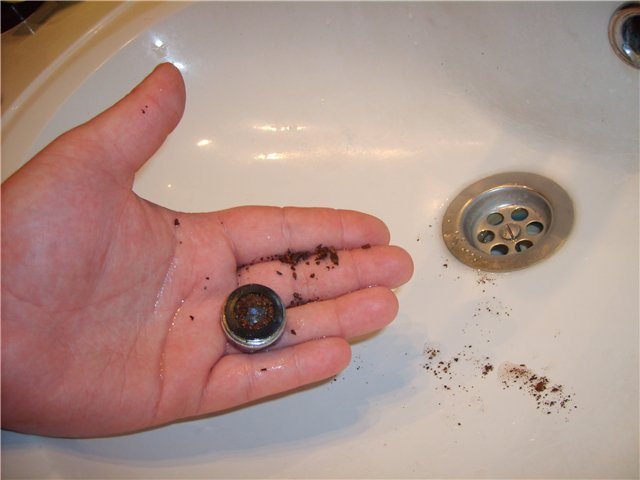

Sometimes it is enough to rinse the tap mesh
The blockage needs to be removed as soon as possible. Cleaning water pipes from the inside at home is usually easy. The cold and hot water lines periodically need flushing. Most often, plaque appears in the following areas:
- Filters - nets for capturing large particles are installed at the entrance to the apartment, in front of counters, mixers. They clog at different rates depending on the quality of the fluid. The filters are easy to clean by simply rinsing with water. Complex deposits and rust are removed with an acid solution.
- Curved pipe sections where foreign inclusions settle.
- Taps and mixers - build-ups appear on the interior of the structure.
- Joints - rust particles or sand cling to roughness.
Lime sediment on the elements of the hot water supply system leads to a drop in the temperature of the coolant. The energy consumption for heating increases. Lime deposits are extremely hard and difficult to remove. Hot water pipes are cleaned using chemical reagents and mechanical devices. The most effective is the effect on the plaque of ultrasound and electromagnetic waves.
Cleaning methods differ in speed and effectiveness. They are chosen based on the degree and nature of the blockage.
Mechanical


It is convenient to clean both water supply and sewerage with a cable
The build-up and blockages inside the pipes are removed using mechanical tools. One of them is a plumbing cable. The device is made of metal wire and has a handle for rotating. It is used to clean water pipes from stones, sand, lime deposits. The device nozzle is selected according to the diameter of the line. Before starting work, shut off the water. Access to the inside of the pipeline is carried out through the removed valve. The cable is advanced in a rotational motion. The removed layers are washed after opening the valves. You can make the device yourself. A flexible, strong wire is required. At one end, a loop is constructed, and at the other, a handle for rotation.
An easy way to remove rust from water pipes is to knock on them with a hammer. Open the tap fully before tapping. The oxide will leave the system with a stream of water. The blows must be careful not to damage the metal.
An effective method is hydraulic flushing. This is a laborious process that requires dismantling the clogged area. The pipe is cleaned with a jet of water supplied under pressure. In an apartment, it will be difficult to carry out the procedure on your own.
Chemical
Dissolve hard limescale deposits with an acid. In everyday life, acetic or citric acid is used.The sediment on the water pipes is removed with special cleaning agents. They are sold at hardware stores. The drug is poured into the system, blocking access to household appliances. The solution is left for 1-2 hours, according to the instructions for use. Then the pipeline is flushed with water by opening the taps. To protect yourself from chemical residues, you need to drain the water for 30-40 minutes. The method is costly and risky. When choosing chemicals, the material of the pipes is taken into account. Strong acid (hydrochloric acid, phosphoric acid) can corrode plastic. When working with chemicals, it is important to observe safety precautions.
Ultrasound
Ultrasonic waves have a destructive effect on any deposits. They remove scale more effectively than chemical reagents. Re-deposition of calcium salts is prevented under the influence of the devices. Ultrasound induces structural changes in chemical compounds in a liquid.
If the tenants of the apartment do not rely on their own strength in performing plumbing work, it is better for them to contact a special service. In every city there are companies involved in cleaning water supply and sewerage systems.


